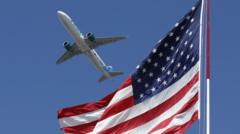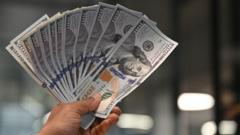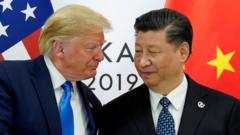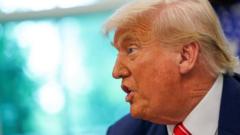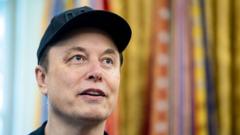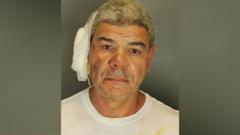As Canada's general election approaches, the final debate showcased party leaders addressing trade, social policies, and the legacy of former PM Justin Trudeau, while maintaining a surprisingly cordial atmosphere despite strong exchanges.
Highlights from the Final Canada Election Debate: Leaders and Policies on Display
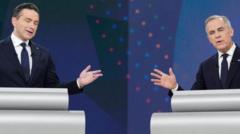
Highlights from the Final Canada Election Debate: Leaders and Policies on Display
The leaders of Canada's four major political parties engage in crucial debates, emphasizing their stances on key issues as the election nears.
The leaders of Canada's four primary political parties gathered for their final debate on Thursday, where the discussion took on critical issues as the country gears up for its general election. Notably absent from the stage was former Prime Minister Justin Trudeau, whose legacy loomed large, especially for Liberal leader Mark Carney, who is currently leading in polls. The focal point of the evening was Carney's ability to defend his stance and distinguish himself from Trudeau amidst tough questions from opposition leaders, including Conservative Pierre Poilievre and New Democratic Party leader Jagmeet Singh.
As the debate progressed, the candidates frequently challenged one another on pressing matters such as Canada's ongoing trade relationships, particularly the challenges posed by US tariffs implemented by President Trump. While Carney acknowledged the imbalance in economic power between Canada and the US, he indicated a shift away from a strategy of dollar-for-dollar tariffs toward more targeted fiscal strategies that would minimize damage to Canadians while still applying pressure on the US.
Despite the contentious nature of some exchanges, the overall tone of the debate remained unexpectedly civil, with leaders showing restraint by complimenting each other's intent on critical issues like housing and public safety. This kind of decorum stood in stark contrast to many contemporary debates, highlighting a distinctive feature of Canadian political culture.
Beyond the central topic of trade, the candidates laid out their policy visions. Poilievre advocated for fiscal restraint and reduced government intervention, while Singh emphasized the need for expanded social programs, including healthcare initiatives. Carney attempted to position himself as a centrist leader advocating for effective government intervention when necessary.
The debate also underscored the precarious position of smaller parties, with Singh's New Democratic Party and Bloc Québécois leader Yves-François Blanchet struggling to gain visibility amidst a two-party race seemingly dominated by Liberals and Conservatives. With recent polls indicating significant losses for these parties, their leaders aimed to make their messages resonate with voters desperate for alternatives.
Ultimately, the second and final debate set the stage for Canadians to make informed choices in the upcoming elections, revealing not just the leaders’ policies but also a commitment to civil dialogue amidst a fiercely competitive political landscape.

